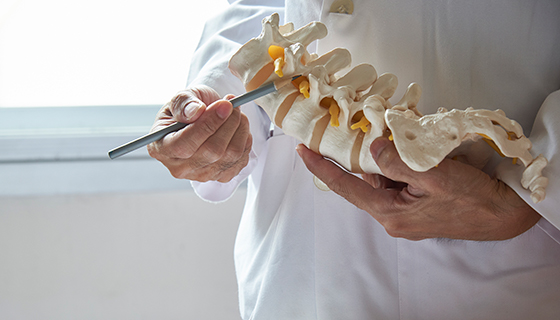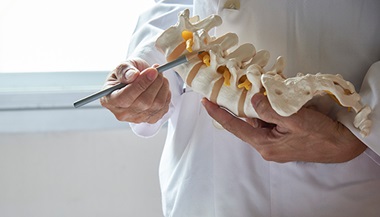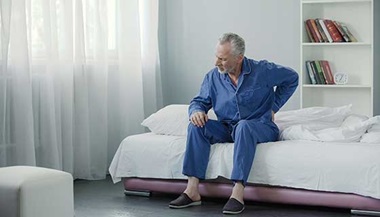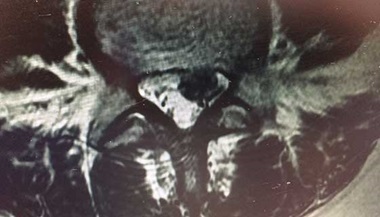7 Ways to Treat Chronic Back Pain Without Surgery
Reviewed By:
Back pain is considered chronic if it lasts three months or longer. It can come and go, often bringing temporary relief, followed by frustration. Dealing with chronic back pain can be especially trying if you don’t know the cause.
Back pain rehabilitation specialist Andrew Nava, M.D. , offers insights into common chronic back pain causes and nonsurgical treatment options—and advises not to give up hope.
Common Causes of Chronic Back Pain
Chronic back pain is usually age-related, but can also result from a prior injury. The most common causes include:
- Arthritis of the spine —the gradual thinning of the cartilage inside the spine
- Spinal stenosis —narrowing of the spinal canal that may lead to nerve pain
- Disc problems, such as a herniated or bulging disc
- Myofascial pain syndrome—unexplained muscle pain and tenderness
In some cases, it’s difficult to pinpoint the cause of chronic back pain. “If your doctor has exhausted all diagnostic options, it’s time to seek a second opinion from a back pain specialist,” recommends Nava. It’s important not to make rushed decisions or undergo extensive medical procedures until the origin of the pain is found. Not only may they not help; they could make the pain worse, warns Nava.
If the source of the pain is not known or can’t be treated, your best option may be to work with your doctor on reducing the flare-ups and making the pain manageable with nonsurgical treatments.
Back Pain Causes and Treatments Webinar | Stephanie Van, M.D.
Chronic back pain is a persistent source of discomfort for many adults. In this webinar, our expert Stephanie Van, M.D., discusses common causes of back pain along with strategies for relief.
Physical Therapy
Exercise is the foundation of chronic back pain treatment. It’s one of the first treatments you should try under the guidance of your physician and spine physical therapist. However, the same set of exercises doesn’t work for everyone, says Nava. The exercises have to be tailored to your specific symptoms and condition. Maintaining the exercise routine at home is also a big part of success.
Physical therapy for chronic back pain may include:
- Retraining your posture
- Testing the limits of pain tolerance
- Stretching and flexibility exercises
- Aerobic exercises
- Core strengthening
Mindfulness and Meditation
Chronic back pain is straining both physically and emotionally. To manage the frustration, irritability, depression and other psychological aspects of dealing with chronic pain, you may get referred to a rehabilitation psychologist. This specialist may recommend meditation, yoga, tai chi and othercognitive and relaxation strategies to keep your mind from focusing on pain
Diet
Some diets are highly inflammatory, especially those high in trans fats, refined sugars and processed foods. Consult with your doctor to see if your diet could be contributing to your chronic back pain and how you could change it. Maintaining a healthy weight could also help lessen your back pain by reducing the pressure on your spine.
Lifestyle Modifications
When you have chronic pain, it’s important to accept your limitations and adapt. “Listen to your body and learn to pace yourself,” suggests Nava. Take a break when mowing the lawn, or make several trips when carrying groceries. Take note of the activities that worsen your pain and avoid them if possible. Not only could this help your back feel better, it could also prevent the underlying condition from advancing. Another important lifestyle change to try is giving up smoking. Nicotine is scientifically known to accentuate pain and delay healing.
Injection-based Treatments
Nerve blocks, epidural steroid injections, nerve ablations and other types of injection-based procedures are available for chronic back pain. They are used when the source of the pain is known and can sometimes help rule out certain causes if the treatment doesn’t work. Injections may stop or lessen pain for a certain period of time, but are not intended as long-term solutions and shouldn’t be used in isolation.
Alternative Treatments
Acupuncture, massage, biofeedback therapy, laser therapy, electrical nerve stimulation and other nonsurgical spine treatments can also make a difference for chronic back pain. Talk to your spine specialist about alternative treatments that could benefit you.
Pharmacologic Treatments
Analgesics, anti-inflammatory drugs, muscle relaxants and other medications can be used to help control chronic back pain. However, most come with unwanted side effects and are not intended for prolonged use.
“Opioid medications generally shouldn’t be used as the first, the only or the long-term line of treatment for chronic back pain,” recommends Nava. Many of them are addictive and don’t address the underlying cause of your pain. Opioids should be prescribed only after a thorough exam by a specialist and if other drugs have failed to provide relief. If you find yourself relying on opioids to get through the day, it may be time to seek a second opinion.
When is Surgery a Good Idea for Back Pain?
These red flags can be indicators for surgery, if they’re found to be related to your spine condition:
- New or progressing bowel/bladder issues
- Weakness in limbs
- Gait and balance problems
- Evidence of increased (brisk) reflexes
Surgery can also be an option for chronic back pain if there is a known cause confirmed by imaging and if other treatments didn’t help. “Get opinions from at least two surgeons,” suggests Nava, “as pain can still come back after the surgery.”







